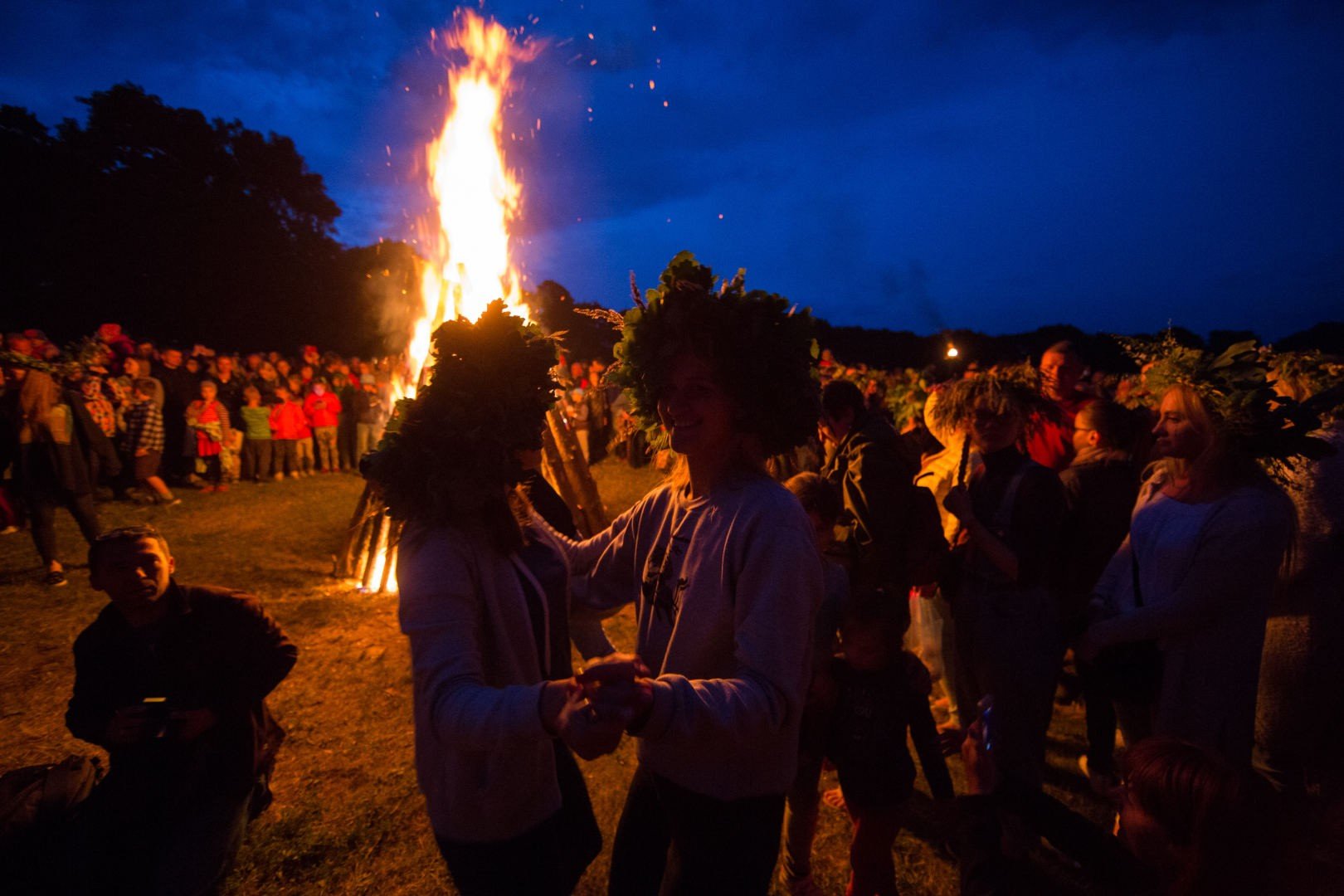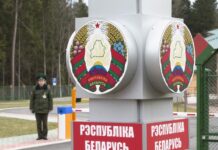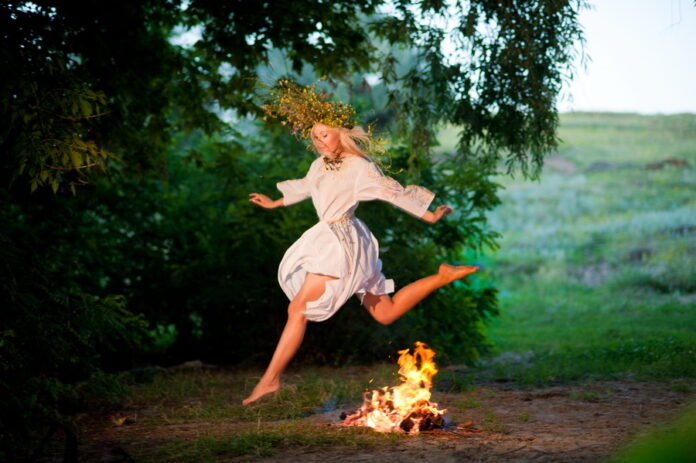
From Lithuania to Toronto
For Lithuanians, St. John’s Day – or “Joninės” – is a most popular festival, celebrated with bonfires, dancing, wreath-making and fortunetelling. It combines a Christian feast (St. John’s Day) with pagan traditions celebrating the summer solstice since Lithuania’s pre-Christian history. Back then, the festival would be called Kupolės – after the herbs collected on that day, also called “Rasos”, literally, the Dew Festival.
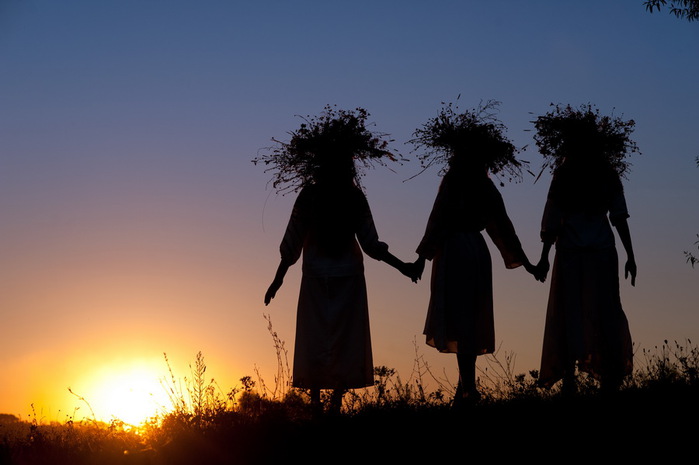 In the olden days, most of the rituals were related to agriculture, ensuring bounteous crops and prosperity. Unmarried women would predict when they would get married, making garlands of flowers and herbs to throw onto tree branches (the number of tries required to get one to hang represented the number of years until marriage) or float them in a lake (if two wreaths touched, wedding bells are expected within the year). Searching for the fern flower (which only blooms on St. John’s Eve) was an important ritual. Not only was it the key to wisdom, but was a quest young people undertook in pairs… Bonfires are still lit on the highest spot of a village, with people dancing and jumping over the fire in couples.
In the olden days, most of the rituals were related to agriculture, ensuring bounteous crops and prosperity. Unmarried women would predict when they would get married, making garlands of flowers and herbs to throw onto tree branches (the number of tries required to get one to hang represented the number of years until marriage) or float them in a lake (if two wreaths touched, wedding bells are expected within the year). Searching for the fern flower (which only blooms on St. John’s Eve) was an important ritual. Not only was it the key to wisdom, but was a quest young people undertook in pairs… Bonfires are still lit on the highest spot of a village, with people dancing and jumping over the fire in couples.
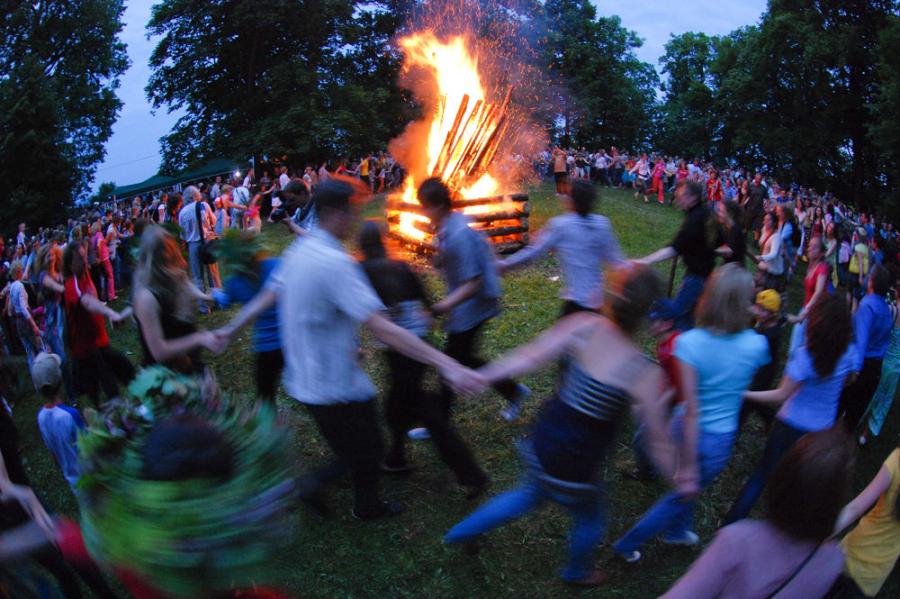 With the advent of Christianity, Rasos came to be identified with the Feast of Saint John the Baptist and was renamed Joninės. The importance of Joninės grew in the twentieth century with a push to strengthen Lithuanian national identity. Pagan revival movements attempted to reconstruct old traditions of celebrating Rasos. In the 1920s and 1930s, festivals would be held on Rambynas Hill overlooking the Nemunas River in western Lithuania. Today, the biggest Joninės celebrations are held in Kernavė. People named Jonas and Janina (and their derivatives) celebrate their name day on Joninės. Many come to Jonava, a town in central Lithuania which is titled the capital of Joninės.
With the advent of Christianity, Rasos came to be identified with the Feast of Saint John the Baptist and was renamed Joninės. The importance of Joninės grew in the twentieth century with a push to strengthen Lithuanian national identity. Pagan revival movements attempted to reconstruct old traditions of celebrating Rasos. In the 1920s and 1930s, festivals would be held on Rambynas Hill overlooking the Nemunas River in western Lithuania. Today, the biggest Joninės celebrations are held in Kernavė. People named Jonas and Janina (and their derivatives) celebrate their name day on Joninės. Many come to Jonava, a town in central Lithuania which is titled the capital of Joninės.
Lithuanian cities and towns make sure that the shortest night of the year is bright and exciting. From traditional Midsummer bonfires to concerts with well-known performers and fire displays on the water, the choices are plentiful.
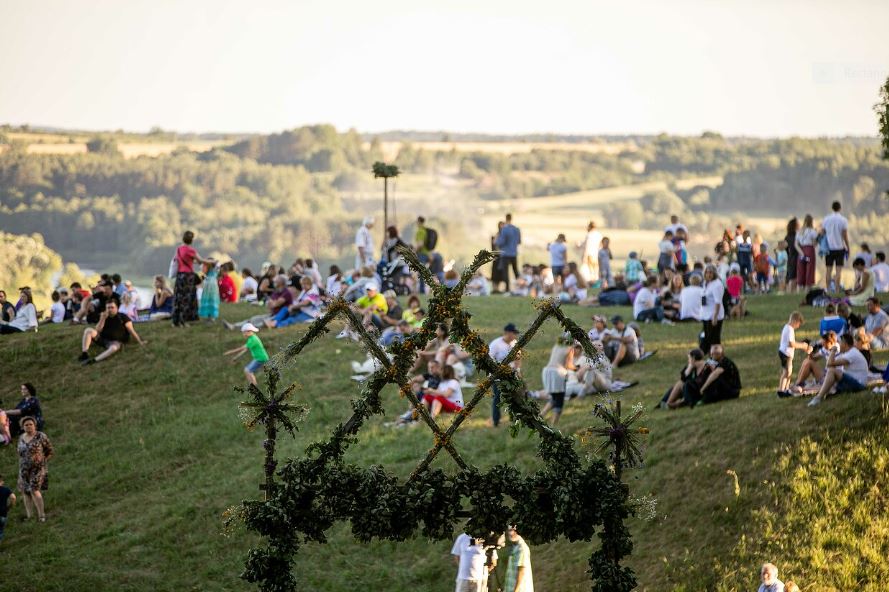 In Kernavė, Lithuania’s mythical first capital, festivities begin on the 23rd with folk art and culinary heritage displays, a festival of ritual dances, games and folk ensemble performances. A bonfire is lit an hour before midnight, and wreaths are launched into the Neris River at midnight, and at 4:30 am, the hardiest join in greeting sunrise and walking in the dew or taking “dew baths” for vitality.
In Kernavė, Lithuania’s mythical first capital, festivities begin on the 23rd with folk art and culinary heritage displays, a festival of ritual dances, games and folk ensemble performances. A bonfire is lit an hour before midnight, and wreaths are launched into the Neris River at midnight, and at 4:30 am, the hardiest join in greeting sunrise and walking in the dew or taking “dew baths” for vitality.
At the Rumšiškės Open-Air Museum of Lithuania the program starting on the 23rd will include both tradition and modernity, folklore and electronic music, field flowers and coloured lasers, light and darkness, fire and water.
In Vilnius, from 7 pm until sunrise, the traditional Dew Festival at Verkiai Manor Park invites participants to dress up with wreaths, make a dome (kupolas) of nine herbs and spend time in the linden-scented Verkiai Park with their families and friends, join in singing rounds at altar of Lizdeika (the soothsayer who interpreted Gedminas’ dream of the howling wolf to mean he should build the city of Vilnius), enjoy musical performances and dance through the night.
Joninės in Kaunas will be celebrated at the Old Pier Amphitheatre. The festivities include performances by Arbata, Varnos and Ramūnas Difartas and his band, as well as a programme of The World’s Best Pop-Rock Hits. The celebration will include a Midsummer bonfire, herbs and wreath weaving, songs, games, spells, and various performances, organized by Kaunas Artists’ House.
For Joninės, St John’s Hill in Klaipėda will be decorated with the motifs of the national costume of the Klaipėda region, and will be the venue for weaving wreaths, gathering, playing games, making jewellery decorated with Baltic symbols, listening to traditional music and dancing.
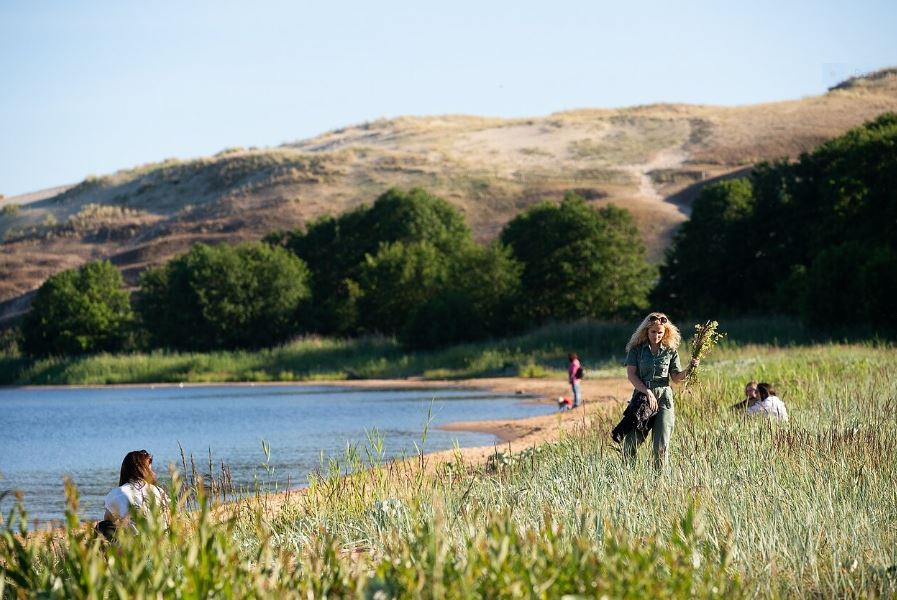 From June 22 to 25, Neringa invites visitors to a legendary international folklore festival “Tek Saulužė ant Maračių”, with educational activities, nature hikes, concerts and other events. Festivities are also planned in Panevėžys, Jonava, Druskininkai, and Zarasai.
From June 22 to 25, Neringa invites visitors to a legendary international folklore festival “Tek Saulužė ant Maračių”, with educational activities, nature hikes, concerts and other events. Festivities are also planned in Panevėžys, Jonava, Druskininkai, and Zarasai.
In Toronto, Canada, Joninės will be an exceptional event at Anapilis Hall in Mississauga, organized by the Toronto “Gintaras” ensemble. The program includes Lithuanian folk dance groups from Sweden (Baltija), Argentina (Nemunas), Plungė (Suvartukas), Cleveland (Švyturys), Kaunas (Ratelinis), as well as a Ukrainian dance group and a “skrabalai” (wooden bell) performer, Regimantas Šilinskas. Performance sets are scheduled for 2:30, 3:30, and 4:30 pm, with “Gintaras” taking the stage exclusively at 5:45 pm. An artisan fair will be held from 2 pm until 8 pm, Lithuanian food will be available from 2 pm to 9 pm, (all events are cash only) with a cash bar all day and a dance party to follow. Tickets available at the door: $25 and $15.
Let’s celebrate!
